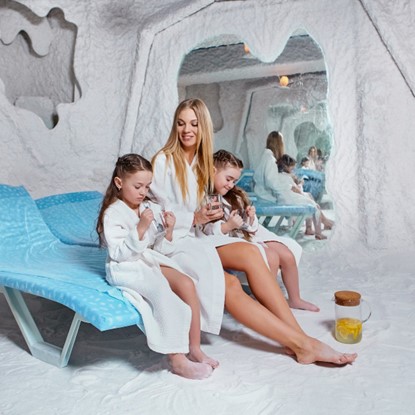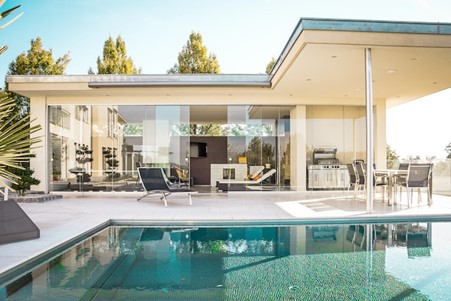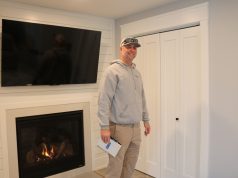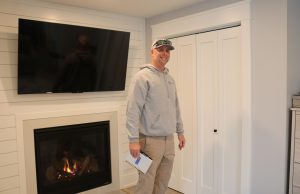Zachry Godfrey of Texas is a housing developer specializing in wellness communities. With the recent increase in healthy living, these wellness communities have been exploding in the US and beyond – China and Australia are also known as wellness community havens. In the following article, Zachry Godfrey discusses this new era, what these communities bring to residents, some included amenities, and what people can expect to pay for this type of luxury.
With an emphasis on forest surroundings, natural—or natural-adjacent—environments, pollutant-free air, and a tranquil, ‘Little House on the Prairie’ aesthetic, wellness real estate is the next billion-dollar real estate phenomenon according to Zachry Godfrey of Texas.
The newest version of an extreme makeover is doing away with the McMansions, gated concrete communities dotted with manicured flowerbeds, and 6-car garages—and ushering in man-made rivers, wildflower meadows, and organic communal farms.
And nary a car or trash can in sight.
Zachry Godfrey of Texas says many people despise “visual pollution.” So much so that it is important for developers of wellness communities to conceal trash disposals, and cans through the use of “trash disposal manholes” on the side of homes.
Some wellness communities even include amenities like a lazy river! Zachry Godfrey of Texas says that some wellness community builds include homes with posture-supporting reflexology floors, vitamin-C infused showers, and access to the neighborhood meditation garden and outdoor yoga studio.
These communities also been reported to throw in a 24/7 personal wellness assistant.
Zachry Godfrey of Texas says that communities like these are winning out over the classic appeal of a “nice neighborhood”. And the wellness community real estate market is on track to hit $180 billion in 2022.
In North America alone demand is growing by 6.4% each year, according to the Global Wellness Institute’s annual Build Well to Live Well report. More than 1.2 million buyers in the US are in the market for wellness-oriented homes.
Wellness communities are a billion-dollar real estate trend—and Zachry Godfrey of Texas explains why.
The Global Demand for Wellness Communities
According to the Global Wellness Institute’s 2018 report, it’s not just US homeowners throwing their money behind this trend.
Sure, the US market makes up the lion’s share for wellness real estate at $42.5 billion, but Chinese home buyers spent $19.9 billion on wellness real estate, Australians another $9.5 billion, and the UK and Germany rounded off demand with a combined $15.4 billion in under 12 months.
Why?
Consumers care deeply about wellness. Globally, estimates for the global wellness market is a staggering $1.5 trillion—and that figure is growing by up to 10% per year.
In a recent survey, 42% of global respondents ranked wellness a top priority. With the global focus on wellness, it’s logical to optimize the environments in which people spend the majority of their time.
Following two years of a global pandemic, lockdowns, isolations, and work from home recommendations, there is no place on earth people are spending more time than in their homes explains Zachry Godfrey of Texas.
 The Science Behind Them
The Science Behind Them
There are two much-touted studies that support the logic behind wellness communities.
The first comes from the World Health Organization, which has noted that—globally—up to 90% of an individual’s health outcomes are a direct result of their environment. From how an individual lives, to where they live, to how connected they are to the community around them—each plays a factor in how healthy they will be long-term according to Zachry Godfrey of Texas.
The second, a Harvard study, found that by spending so much time indoors—up to 90% of it—people are sicker, predominantly due to unclean air and toxins in the environment.
Between the two, and countless studies since that extoll the virtues of improving our living environment, wellness communities are shown to bring human wellbeing into focus for individuals who buy into these communities.
But it’ll cost them.
The Cost of Wellness Communities
Wellness communities don’t look like the cookie-cutter luxury gated communities dotted around the US. They range from residential home communities to apartment buildings and luxury condo neighborhoods.
However they’re designed, they tap into the wellness community ideal of a sanctuary in (or adjacent to) the city.
A wellness rental apartment in California’s Venice Beach delivers entry-level wellness benefits: a yoga studio and outdoor meditation garden, wellness classes, and a community of health enthusiast neighbors. This particular type of apartment can set residents back a manageable $995 per month.
Moving up the scale into luxury territory comes the 5-star communities (these luxurious communities include more amenities in both the community and in-home). These types of features can set residents back a cool $3.5 million for a 2-bed, 2-bath condo.
At the highest end of the scale sits the 8,000 – 10,000+ square foot wellness homes that will set owners back $20+ million according to a 2019 report. These luxury homes include AI technology, ergonomic flooring, water and air filtration systems, lighting that can sync with resident’s circadian rhythms, and even a private Himalayan salt room to detox after a long day!
Wellness homes are all the rage in the celebrity community as well, reportedly celebs like Leonardo DiCaprio and Deepak Chopra own wellness homes, just to name a few.






